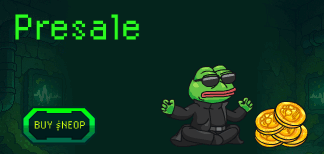The trading volumes of multichain on the decentralized exchange Uniswap have taken off.
Uniswap Labs revealed it in a recent post on X.
Summary
The Uniswap exchange records a boom in multichain volumes
Uniswap is a decentralized exchange born in 2018 on Ethereum. It was one of the first decentralized exchanges in the world, and for some time now it has dominated both in terms of volumes and TVL in this specific sector.
Although in terms of daily volumes it is not always consistently in the first position, in the long run it continues to dominate substantially unchallenged.
However, for some time now Uniswap has effectively become a multichain DEX, as it also supports many layer-2 chains of Ethereum. In total, it is present on 19 chains, including some alternative chains to Ethereum, such as BSC and Avalanche.
Specifically, however, the post on Thursday by Uniswap Labs showed the real boom in overall volumes that Uniswap has recorded in recent years on Ethereum layer-2s Arbitrum, Polygon, Optimism, and Base.
Initially, the volumes of Uniswap on Ethereum layer-2 were insignificant, but starting from the end of 2021, that is from the peak of the last great bullrun, they began to grow.
Until January 2023, the growth had been slow and steady, but starting from February 2023, there was a first boom that led the overall monthly volumes on Ethereum layer-2 to exceed 100 billion dollars.
But if it took a full 22 months to reach 100 billion dollars, it only took another 10 to surpass 200 billion dollars. Furthermore, it only took another 3 to also reach 300 billion dollars in total monthly volumes.
In fact, the second big boom happened this year, probably thanks to the Dencun update of Ethereum which drastically lowered the fees on on-chain transactions on layer-2.
Uniswap: record of multichain volumes on the decentralized exchange
At this moment the DeFi protocol Uniswap has almost 5 billion dollars of TVL on Ethereum, with about 700 million dollars of daily trading volume on this chain.
On Arbitrum, however, it only has 300 million dollars in TVL, but it exceeds 150 million in daily trading volume. Therefore, with a TVL sixteen times lower, it records a volume that is only five times lower.
On Base, it is even recording more than 240 million dollars in daily trading volume, compared to only 321 million in TVL. Base is the fastest and cheapest layer-2 on Ethereum among the main ones, also because it was developed by the Coinbase team. Practically, with a TVL that is about fifteen times lower than that on Ethereum, it records trading volumes that are only three times lower.
On Polygon and Optimism these numbers are lower for Uniswap, but on the other hand, Base and Arbitrum are the cheapest layer-2 on Ethereum that exist, among the most used ones.
It should be noted that on BSC, which is effectively an alternative layer-1 chain to Ethereum, Uniswap is decidedly marginal, with less than 15 million dollars in daily trading volumes, and on Avalanche it is irrelevant.
In total, what is the largest DEX in the world currently approaches 2 billion dollars in daily trading volumes with a TVL exceeding 5.8 billion.
Although the main chain it works on is still Ethereum, most of the volumes are now recorded on the other chains combined.
Uniswap Labs
Uniswap Labs is effectively a private company that develops the code for the Uniswap protocol.
However, this is a public smart contract that runs independently on decentralized blockchains such as Ethereum, so it can be said that Uniswap Labs does not control Uniswap, but only controls its development, that is, the release of new versions.
In fact, a public smart contract once uploaded to a decentralized blockchain cannot be modified. At most, a new version can be launched.
The Uniswap protocol has reached its third version, and Uniswap Labs is already working on the fourth.
The UNI token
Uniswap also has its own native token, called UNI.
After the boom of the first months of 2021, thanks to which the price of UNI reached its all-time highs at almost $45, there was a long bear-market that ended only in October of last year below $4.
It should be noted that the initial price at the time of landing on the crypto markets, in September 2020, was about $3.4, which is not much lower than the minimum peak of the bear-market 2022/2023.
Starting from November, however, UNI was also able to benefit from the new bullrun, climbing to almost $8 by the end of 2023.
During the course of 2024, a mini-bubble inflated on the price of UNI between February and March, with a quick rise above $15 followed by an equally rapid plunge below $7.
It should be noted, however, that 7$ is still much more than the 4$ at which the bullrun started, although less than the peak of 8$ at the end of 2023, and that there has been a rebound since the end of May.
Thanks to this rebound, the price of UNI has returned to around $11, which is close to the highs of 2024 if we exclude the mini-bubble of February/March.
The current price level is in line with that of April 2022, before the implosion of Terra/Luna, and this suggests that the bear-market of UNI is now definitively over, although in theory, another one could always start sooner or later.


